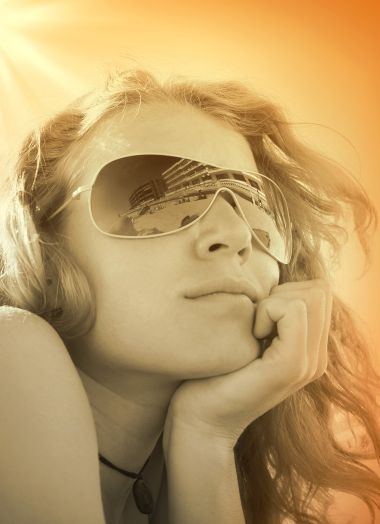Earlier this week, I wrote a post about limits and how limits engender creativity. Unfortunately, I opened with a lengthy discussion of my recent forays into SLR photography, and the point of that post seems to have gotten lost. Since it’s an important point, I thought I’d revisit it, this time without talking about cameras. As humans, we are limited beings. We have no wings, claws, or gills. We are bound by gravity, thermodynamics, and conservation of energy. We are born into specific cultures, receive specific educations, and interact with specific people. As a 6-year old child once told me when the TV said he could be anything he wanted to be, “That’s not true, you know. You can’t be God. Or a tree.” Yet when we discuss creativity, we speak as if we were unlimited, as if creativity were all about transcending limits. We speak of limitless imagination, boundless enthusiasm, and infinite possibilities. We look down on those who accept their limitations, and admire those who seem to overcome theirs. I want to suggest that creativity does not lie in the realm of the infinite but in the realm of the finite indeed – the bounded, the minimized, the limited. And not just that it is the experience of limits that inspires us to be creative in order to overcome them – that’s too easy, too everyday. No, that it is the limits themselves that create creativity.
The limits of materiality
Consider a musician. A musician is always aware of the limitations on his or her music-making. The nature of the instrument he or she plays is a limitation. Her or his cultural musical tradition is a limitation – as is the way that tradition shapes his or her experience of other culture’s musical traditions. The scales, modes, and chord forms he or she has learned are a limitation. Even the music she or he plays is a limitation. The best musicians might push at these limitations, work to expand them – but they do so from within, not in a giant leap beyond. Free jazz, for example, takes its meaning as much from the traditions and structures the musicians reject as from the actual notes they’re playing (on instruments that themselves are limited). And, of course, other great musicians not only accept but respect the limitations of the music they’ve inherited – a Mozart performance is no place for a 3rd chair violinist to discover the infinite! For a photographer, it is the nature of the lens glass, the character of the film or of the sensor array, the quirks of the shutter mechanism, and of course the quality of the light that all conspire to limit and create the composition. For writers, it is the inherited words, meters, and idioms of their language that limits and inspires great poetry. For painters, it is the consistency of the paint, the texture of the canvas, and the heft of the brush that limit and guide their portraiture. We speak of art, of music, of creativity in general as a kind of magic force, an invisible and immaterial thing that emanates unstructured and unbounded from the mind of the genius. But creativity doesn’t flow freely – it arises from and is embodied in the limited world around us. It may press up against the limitations of the material with which we create, but it never exceeds them. The brilliance of a Jimi Hendrix, a Pablo Picasso, an Ansel Adams is not in their exceeding the limits of the guitar, of paint and canvas, or of photographic emulsions, it’s in their relationship with their mediums and the limits that each artists’ medium imposes.
The importance of limits
Why does this matter? Why take not one but two posts to make this point clear? We have transformed into a society of ideas. Creativity is the raw material of the information economy. The Internet has given us a channel for dissemination of ideas unprecedented in the history of humankind, and yet I think the critics are right – we have taken one of the greatest advances in human history and cluttered it with all kinds of crap. And I think we can do better – if we can only rid ourselves of this misguided notion of human creativity as something separate from and beyond human capacity. So many people ignore their creative urges, feeling that they are too limited to “really” be creative – the lack experience, time, training, money, whatever. So I want to rethink our relationship with limits, to recognize that the people who are most creative are not the people who were least limited but the people who embraced and drew inspiration from their limits. I think of the poet Audre Lorde, who writes of scratching out poems on dime-store notebooks between loads of laundry, cooking meals, and the other pressures of motherhood. I think of Stephen King, who abandoned his huge stately desk in favor of a writing table in the corner. I think of painters who learn not by painting the world but by painting an empty bottle and a piece of fruit, or writers who embrace the challenge of writing prompts or of NaNoWriMo (where writers attempt to write a novel in a month), or musicians’ love affairs with the particular quirks and oddities of their instruments. And in the end, I think of all of us, bound in a thousand different ways that could, if we’d just let it, engender a thousand different creativities. I’m arguing that rather than giving up before the things that limit us, we should surrender to them, in the way a sculptor surrenders to the cleavage planes of a stone or the grain of a block of wood – surrender, and see what we can create out of those limits.
